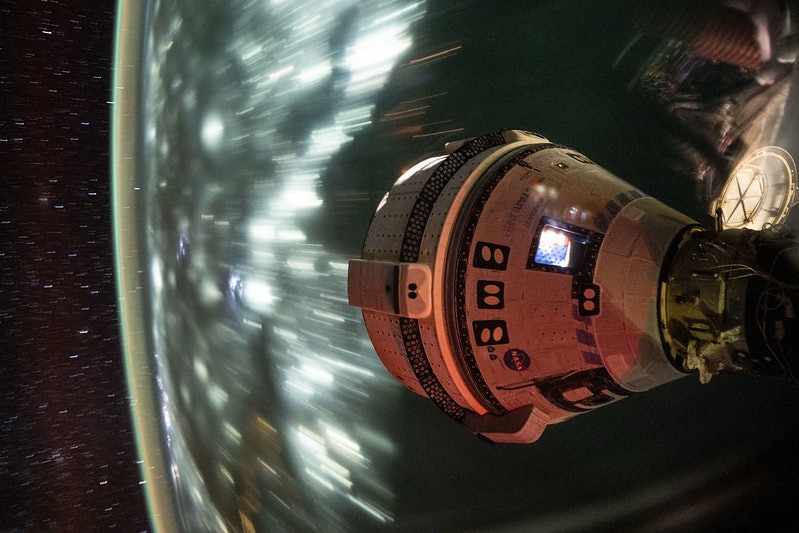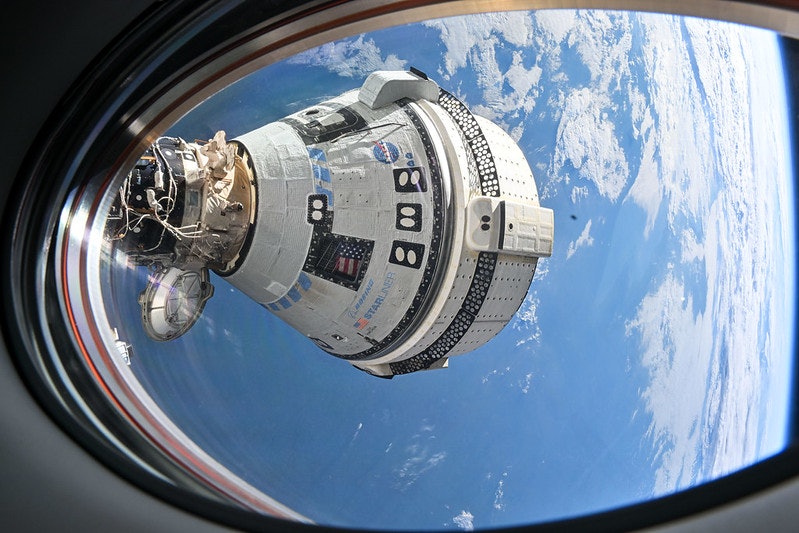
After tense discussions and months of testing, Boeing’s Starliner vehicle, called Calypso, is finally coming back to Earth. If all goes according to plan, the spacecraft will land early Saturday morning in New Mexico, just minutes past midnight. Starliner will travel passenger-less during its six-hour journey, leaving its two astronauts behind.
The travel back to Earth will begin by undocking from the International Space Station (ISS), and will culminate in an historic landing in the U.S. Southwest. The two NASA astronauts that carried Starliner into low-Earth orbit will remain in space until at least February 2025. They’ll come home in another company’s spacecraft — a SpaceX Crew Dragon — as space agency officials didn’t feel Starliner passed the safety threshold to bring the crew home.
Starliner’s return will be closely monitored. The security concerns keeping Starliner astronauts Butch Wilmore and Suni Williams on the ISS stem from Starliner’s propulsion system. The vehicle leaked helium and five of its thrusters failed as it approached the ISS for docking on June 6.

Here’s how Calypso will travel back to Earth alone.
Step One: Check The Weather
First, teams must decide if it undocks at all. Operational checks are part of that decision. There’s also the weather to consider. On Thursday, NASA officials outlined the requirements for weather, which include things like making sure the landing site is clear of rain and thunderstorms, and it's not too windy or cloudy.
Step Two: Getting Up And Away
At this point, typically, astronauts would be in the capsule. But even when they are, much of the flying is done autonomously. Starliner has already flown to space and back without a crew for Orbital Flight Tests 1 and 2.
But, without a crew to steer Starliner, NASA opted for a sequence that gets Starliner away from the ISS in a faster way, so as not to put the ISS at any risk.
“There are differences between an uncrewed and a crewed departure. For this departure, Starliner will do those immediate thruster burns to get up and away from ISS rather than a normal trajectory that has Starliner stay close to ISS and then head underneath. This is all using capabilities that are built into Starliner,” Anthony Vareha, ISS flight director, said at a media conference the space agency held on Wednesday.
Starliner will fire its thrusters for 12 burns to distance itself from the ISS. Springs will generate momentum to “immediately create clearance,” Steve Stich, manager for NASA’s Commercial Crew Program, said Wednesday in a press conference.
Stich doesn’t anticipate a problem with the thrusters. Undocking will put the thrusters through short pulses, not the frequent pulses that NASA suspects generated the thruster degradation seen before docking, he said. NASA officials believe the thruster problems during Starliner’s rendezvous with the ISS in June stemmed from the thrusters overheating, which caused seals inside some thruster valves to swell.
Starliner should move up and away, and eventually curve around the space station, said Vareha.

Step Three: The Deorbit Burn
Several orbits later, Starliner will seek to commence its deorbit burn. That gets greenlit when another weather check shows that winds are blowing below 10 mph at the landing site.
The deorbit burn is a major commitment. It syncs the craft with its landing site. The burn lasts about a minute, and would slow Starliner down enough to safely re-enter Earth’s atmosphere.
It then disposes of the service module, which includes its faulty thrusters, to burn up over the Pacific Ocean. What remains of Starliner is the command module. This repositions it to ace its landing.
Step Four: Slice Through Scorching Plasma
The Starliner command module must endure temperatures of up to 3,000 degrees Fahrenheit as it drops through Earth’s atmosphere.
“That may interrupt communications with the spacecraft for approximately four minutes,” NASA officials wrote on Thursday.
Step Five: Pump The Breaks
Once Starliner gets 30,000 feet from the ground, it jettisons a heatshield. This exposes two drogue and three main parachutes for deployment, which will help slow Starliner down further while another heatshield protects the spacecraft until that too is jettisoned eventually at an altitude of 3,000 feet.
By tossing the second heatshield, Starliner’s six landing bags can now inflate. They’ll cushion Starliner’s touchdown. Teams expect Starliner to land at a speed of just four mph.
Step Six: Send In The Teams
In sequential order, five teams with color-coded names will approach Starliner. They’ll perform a range of inspections, starting with checking for unspent fuel, cooling Starliner down, and eventually opening the hatch.
Starliner’s issues have delayed the next phase of Boeing’s contract with NASA: namely, to send the aerospace company’s official first crew-rotation mission to the space station. Although the future of Starliner’s development remains unclear, and its status as a backup plan to bring astronauts to and from low-Earth orbit remains uncertain, at least Calypso’s saga is done.







